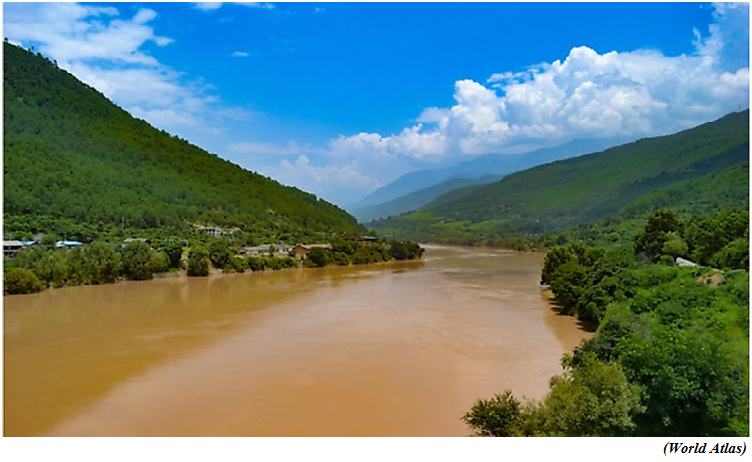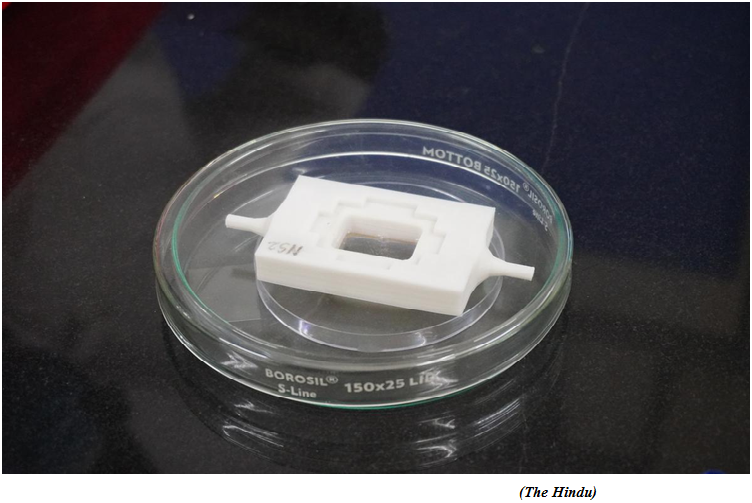Blue economy occupies vital position in Indias economic growth CAG (GS Paper 3, Economy)

Why in news?
- The blue economy occupies a vital position in India's economic growth, and it could well be the next multiplier of GDP and well-being, provided sustainability and socio-economic welfare are kept at the centre stage, said CAG G C Murmu.
- Comptroller & Auditor General of India (CAG) was speaking at a seminar on the challenges and opportunities in the Blue Economy.
Vast maritime resources of India:
- India has a 7,517 km long coastline that is home to nine coastal states and 1,382 islands. The coastal economy sustains over 4 million fishermen and other coastal communities.
- There are nearly 199 ports, including 12 major ports that handle approximately 1,400 million tons of cargo each year.
- Moreover, India's Exclusive Economic Zone of over 2 million square kilometres has a bounty of living and non-living resources with significant recoverable resources such as crude oil and natural gas.
Priority areas at SAI20:
- With India assuming the Presidency of the G20 in 2022-2023, CAG holds the chair for SAI20.
- In line with the Indian theme of the G20 Presidency- "Vasudhaiva Kutumbakam" or "One Earth. One Family. One Future", the CAG has selected two priority areas viz. "Blue Economy" and "Responsible AI" for deliberations.
Significance of blue economy economic system:
- The blue economy economic system promotes the sustainable use of marine and freshwater resources while conserving their environments.
- It encompasses policies and operational dimensions aimed at producing food and energy, supporting livelihoods, and driving economic advancement and welfare.
- Blue Economy while being intrinsically linked to the Sustainable Development Goal (SDG) 14, which focuses on conserving and using oceans, seas, and marine resources for sustainable development shall also be viewed from a holistic perspective of SDG 13 - Climate Action; SDG 6 - Clean Water; SDG 7- Clean and Renewable Energy.
Single auditing framework:
- While there were audit criteria and framework for auditing sub-sectors, such as, marine fisheries, coastal ecosystem, aquaculture, coastal and marine tourism, biotechnology from marine resources and extraction of sea-bed mineral resources, integrating them into a single auditing framework would be key to all Supreme Audit Institutions (SAIs), including the SAI20 Engagement group.
- SAIs could strive to scale up their efforts, develop study papers on the condition of the Blue Economy and make recommendations on how the governments could direct their efforts and policies for sustainable development of the Blue Economy of their nations.
About SAI20 Engagement Group:
- It is a group of Supreme Audit Institutions of G20 countries.
- The Supreme Audit Institution is the country’s official top audit institute or agency. In India, it is CAG.
- The establishment of SAI20 was initiated by Indonesia during its 2022 G20 Presidency.
- It aims to contribute, among other things, to the transparency and accountability of good governance.
- With India’s assumption of the G20 presidency on December 1, 2022, CAG of India, i.e., SAI India shall take the chairmanship of SAI20.
The Yellow River, ‘China’s sorrow’
(GS Paper 1, Geography)
Why in news?
- The mighty Yellow River, the ‘mother river’ of Chinese civilisation, has also been known as the ‘River of Disaster’ and ‘China’s sorrow’ because of the devastating floods it has wrought in its basin from pre-history to the last century.
- While much of the blame has been put on the upstream Loess Plateau, a new study has noted that the Chinese practice of building embankments is also to blame.

Details:
- The visited several sites along the river and studied sediment and historical records to conclude that the river used to flood four times every century before humans began to alter the environment.
- Around 6,000 years (3500 Before Common Era), when humans brought the practice of settled farming to the region, the river began to flood 10 times.
- The Chinese practice of building mud embankments, especially during the Imperial Period to ‘tame’ the river as having only made matters worse.
About Yellow River:
- The Yellow River is the sixth-longest river in the world and is also the most sediment-laden.
- Also known as Huang He, it originates in the province of Qinghai, flows through the Loess Plateau, where it takes sediment that gives its waters their characteristic yellow colour. It then flows across the flat North China Plain before draining into the Bohai Sea, a part of the Yellow Sea.
- The sediment or loess (a type of silt) from the plateau usually settles on the river bed and raises its height, making the river especially flood-prone in the lower reaches, on the North China Plain.
- The Flood of 1887, which occurred during the rule of the Qing Dynasty, is said to have killed almost two million people and is considered to be one of the deadliest natural disasters in history.
Embankments along the river:
- The Chinese responded to the floods in the river by constructing embankments or levees. Their analyses suggested embankments, though the least expedient strategy for flood control, had only short-term effects on flood mitigation.
- In the Yellow River’s case, deforestation and soil erosion on the Loess Plateau played an important part in increasing the need to create embankments.
- The deposition of sediment in the river channel necessitated the construction of artificial levees to keep the river water from spilling out.
- But the superelevation between the riverbed and the surrounding flood basin would be increased, making the area flood-prone. This would necessitate the need for more embankments and more floods.
Management strategy:
- The management and greening of the Loess Plateau since the 1950s, after the establishment of the People’s Republic of China, had made the flood hazard nearly zero.
- The scientists suggested using structural flood control with other risk-mitigation strategies for long-term benefits. They also said attention must be paid to extreme weather events.
- The results provide a knowledge base not only for the planning and design application of river engineering but also for developing deliverable adaptive strategies and preventive measures that may be readily transferable to other human-dominated rivers.
‘Organ on a chip’: a tech which mimics disease systems in laboratory conditions
(GS Paper 3, Science and Tech)
Context:
- In 2022, the U.S. government passed the Food and Drug Administration Modernization Act 2.0.
- The move is expected to boost the research and development of ‘organ chips’, small devices containing human cells that are used to mimic the environment in human organs, including blood flow and breathing movements, serving as synthetic environments in which to test new drugs.

Why focus is on alternative models that mimic human diseases?
- Bringing a new drug into the market is an expensive process ridden with failure. First, researchers identify chemical compounds that can be used to treat a condition using modelling and other techniques. Then they shortlist those that perform well and test them on cells grown on plastic dishes in the lab or on animals that can mimic the disease in certain conditions.
- At this stage, called the preclinical trial, scientists determine whether these drugs are toxic and if they can efficaciously treat the condition. Animals used here include mice, rats, hamsters, and guinea pigs, depending on the drug being tested. Researchers also use pigs when testing implant devices like stents. If the trial results are favourable, researchers can begin human clinical trials.
- Today, fewer than 10% of new drugs complete preclinical studies and fewer than 50% of these eventually successfully complete clinical trials.
- These challenges have led scientists to look for alternative models that mimic human diseases. One such is the organ-on-a-chip model, which has garnered a lot of attention in the last decade.
Organ chips:
- Donald Ingber, a professor of bioengineering and director of the Wyss Institute at Harvard University, and his colleagues developed the first human organ-on-a-chip model in 2010. It was a ‘lung on a chip’ that mimicked biochemical aspects of the lung and its breathing motions.
- In 2014, Wyss Institute members launched a startup called Emulate Inc. to commercialise their technology. The group has since created several different chips, including of the bone marrow, epithelial barrier, lung, gut, kidney, and vagina.
- Recently, Emulate’s liver chips could successfully predict the ability of drugs to cause liver injury with 87% sensitivity and 100% specificity. The researchers used liver chips to evaluate the toxic effects of 27 drugs known to be either safe or cause liver injury in humans.
Organ chips in India:
- A few research groups in India have also been developing organ-on-chip models.
- Prajakta Dandekar-Jain at the Institute of Chemical Technology, Mumbai has developed a skin-on-chip model together with the team of Abhijit Majumdar, an associate professor of chemical engineering at IIT Bombay.
- The model is currently being tested for studying skin irritation and toxicity. The two groups are also developing a retina-on-chip model together.
- Dr. Majumdar and his team are also separately developing a placenta-on-chip model with Debjani Paul, a professor of bioscience and bioengineering at IIT Bombay, and Deepak Modi, a scientist at the ICMR-National Institute for Research in Reproductive and Child Health, Mumbai.
- These models better predict treatment outcomes than conventional cell-culture systems, where researchers grow cells in plastic dishes in the lab, since they model different aspects of the human body, including its three-dimensional geometry and the flow of fluids like blood and lymph.
Mimicking diseases:
- Apart from organs, researchers are also trying to mimic different disease states using chips. Kaushik Chatterjee, an associate professor of materials engineering, and Deepak K. Saini, a professor of developmental biology and genetics at the Indian Institute of Science, Bengaluru, are doing this for the lung.
- A group has developed an infection-on-a-chip model to recreate a human skin wound infection state. The goal is to mimic an infection that doesn’t heal despite prolonged and repeated antibiotic treatment.
Way Forward:
- Some of these organs-on-chips that Indian scientists have developed are ready for use as drug test-beds in lab settings, but they could be a decade away from featuring in preclinical trials.
- Researchers and biomedical companies in the West have started to build larger human-on-chip models, assemblies of different organ chips containing nutrients for the cells flowing across them, mimicking the flow of blood and nutrients across different organs in the body.
- The idea is to predict the efficacy of a drug against a particular disease in the presence of messy organ interactions instead of cleanly isolated systems.




